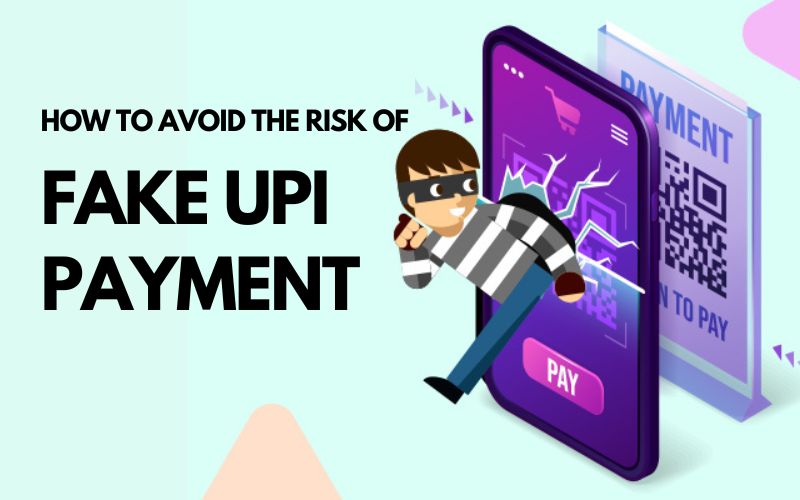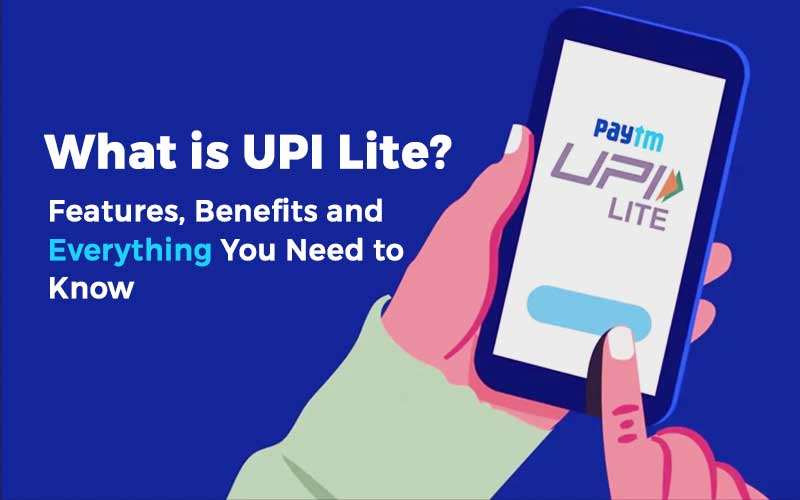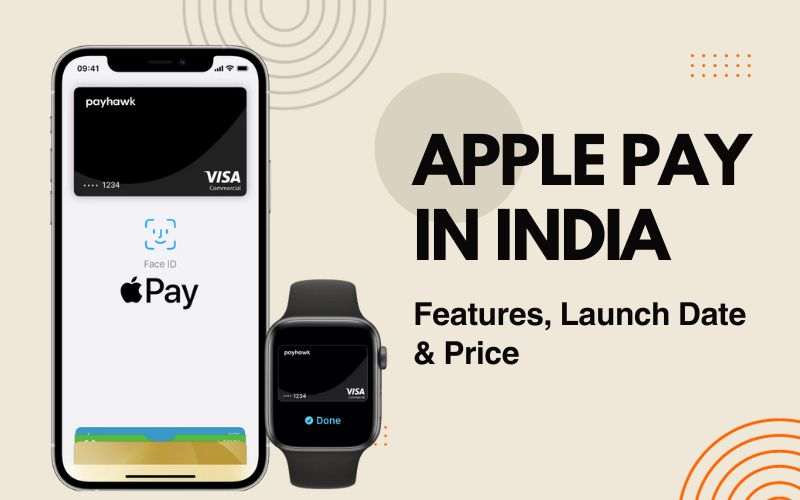
Key Points
- This article discusses about the the rise of fake UPI payment, detailing common scams and providing tips to protect against them.
- Fake UPI payments involve various tricks mainly aiming to steal money or personal information.
- Scammers use methods like fake payment screenshots, phishing links, and QR code scams.
- The reasons behind these scams include greed and exploiting trust in popular platforms.
- To keep safe, watch out for decisions made in a hurry, offers that sound too good to be true, and requests from people you don’t know.
- Victims can take action by blocking their UPI PIN, changing login details, reporting the scam to authorities, and staying informed about security measures.
India’s switch to digital payments has been made possible by something called the Unified Payments Interface (UPI). It lets you send money to others easily and quickly from any place at any time. But there is also a dark side. The rise of the UPI Scam. Some fraud people use various tricks to cheat you with fake UPI payment and that has become a huge concern. It is important to know how these scams operate to keep yourself safe. This article explores the world of fake UPI payment. It helps you identify the scams, take necessary actions to protect yourself, and make smart transactions. So, keep reading.
What are Fake UPI Payments?
Fake UPI payments are nothing but tricks which are used to fool people into thinking they received or sent money through UPI for real. These tricks can be different for different people. But they all want to steal your money or any important data. Let’s talk about some common tricks the fraudsters use:
Fake Payment Screenshots: Some bad people out there make a fake screenshot of payment confirmations from UPI and trick people into thinking they got money. Then they pressure these folks to send money back or give away personal info.
Phishing Links: Other scammers send emails or texts that seem legit from UPI or banks. But if you click their links, they take you to fake sites that steal your UPI PIN or login details.
QR Code Scams: Watch out for QR codes too. Scammers make fake QR code which is connected to fake UPI accounts. When you scan them, they ask for payment instead of showing info. If you don’t know, you might send money to the scammer without realizing it.

These scams are very risky and can make us lose a lot of money. They also make people stop trusting the UPI system. It’s important to be careful and stay safe from these scams.
Why People Use Fake UPI Payment
Now the question is what is the reason behind this. The scammers who are behind the fake UPI payments are mostly driven by their greed. They usually steal money from people without knowing them personally. They do this for a few reasons.
First, they see UPI as an easy way to cheat many people at once because it is so popular.
Second, they take advantage of people’s trust in well-known brands or when they feel rushed to make quick decisions.
Lastly, some scams aim to steal personal information like your UPI PIN or login details so they can keep cheating you in different ways.
Fake Payment Scams on the UPI Platform
Scammers use different tricks to fake UPI transactions. Like –
- They create fake screenshots of payments to fool the sellers. As a result they give away their stuff without getting real money. Sometimes, they pretend to be delivery guys and ask for upfront UPI payments for a package that doesn’t even exist.
- Also, they act like customer service people and say they’re giving refunds. But instead of giving money back, they make victims send money to them using a “collect request.”
- Some scammers set up fake websites or social media pages offering great deals. When you fall in that trap and try to pay. you actually end up sending money to them without knowing.
- There are QR code scams too. Scammers make fake QR codes that, when you scan them, send money straight to their accounts.
- Then, there are lucky draw scams. They usually send you a message to your phone or email that you have won a big prize or a lottery. But to get it or to claim that, you have to pay a small fee through UPI as a transfer money. And you can definitely understand where that money goes, right?
- And lastly, there are phishing scams. They usually send messages or emails with some links. Those links look so real and when you click, that takes you to a fake login page of your bank or something very familiar to you. Through that login they steal your information. So, be careful!

Other Online Scam Using UPI Fraud
UPI scams are not just about fake payments. They include different types of scams. Let me explain.
- Fake Investment Schemes: In fake investment schemes the fraud people promise big returns on some investments that are not real or not practically possible. They usually ask for money through UPI.
- Social Engineering Scams: Social engineering scams play on emotions and manipulation. The scammers might pretend to be someone you know, like a friend or family member, or even someone official. They use that trust to make you share personal info or agree to some fraudulent deals.
- Duplicate SIM Scams: Duplicate SIM scams happen when someone gets a copy of your SIM card. With this, they can get OTPs sent to your phone and make unauthorized UPI transactions.
- Phishing: Phishing scams involve fake emails or texts that look so real. They often make them look like that sent from banks or UPI providers. They try to get you to share sensitive info like your UPI PIN or OTP, CVV etc.
- Malware Attacks: Malware attacks involve harmful software that sneaks onto your device without you knowing. This lets scammers steal your UPI PIN or login details, so they can make unauthorized transactions.
How to Identify Fake UPI Payments
Identifying fake UPI fraud is not so difficult. Being a little more careful you can easily identify the signs of fake UPI payment. Here are they:
If someone is pushing you to hurry up and do something really fast without giving you time to think, it’s probably a scam. Scammers always do this to make you panic. So that you can not think straight and act quickly without any judgement.
if someone offers you an investment deal that sounds way too good to be true, it’s likely not legit. They always promise you a lot of money in return which may not be practically possible. That is just a trick.
Be careful if you’re getting money requests or payments from people or businesses you don’t know. It’s better to double-check and make sure it’s from someone you trust.
If you notice any mistakes in the messages or websites you are asked for checking. Like some spelling errors or weird sentences. Then that is absolutely a red flag. Because the Legit stuff usually doesn’t have those kinds of mistakes.
Another thing to be alert about is clicking any link or scanning any QR codes from any random messages or email. That could take you to some places on the web where you should not go.
If the name of the sender, their UPI ID, or the reason for the transaction don’t match up, something fishy might be going on. You may read in detail: How to Spot A Fake UPI ID? Examples, Risks & Prevention
Lastly, never share personal info like your UPI PIN, OTP, or bank details unless you’re sure it’s a legit transaction. Legitimate transactions don’t need that stuff.
What to Do if You Become a Victim
If you realize that you have been a victim of a fake UPI payment scam, here is what you need to do right away:
First, block your UPI PIN ASAP. Stop any more unauthorized transactions by turning off your current UPI PIN using your UPI app.
Then, immediately change your UPI PIN and login detail as well. Choose a strong and unique PIN and update your login info for any other apps that is also linked to your account.
Next, report about the scam to your bank and the UPI app provider both. Inform them about what has actually happened. Give them all the important info, like transaction IDs, screenshots, everything you have related to the scam. And also share any messages if you have had with the scammer.
Lastly, report the scam to your local police station. This step is important because having a police report can help in getting back the money you lost and taking legal action against the scammer.
Also Read: Which UPI App is Safe: PayTm Vs. PhonePe Vs. Google Pay
Protecting Yourself from Fake UPI Payment
To keep yourself safe from fake UPI payment, there are a few important things to remember.
- Never Share Confidential Information: Don’t tell anyone your secret UPI details like your PIN or OTP. Only share your virtual payment address or QR code.
- Verify Sender Details: Before you say yes to any payment requests, check if the sender’s name and address match who you think it is.
- Verify Recipient Details: Before you send money, Verify the recipient’s name and address are correct. Small mistakes can send your money to the wrong person.
- Be Cautious with QR Codes: Only scan QR codes from places you trust. If you’re not sure, don’t do it.
- Download Apps from Official Sources: Get your UPI apps only from official app stores like Google Play or Apple’s App Store. Don’t download from random websites. Download only the legit 3rd Party UPI apps recognized by NCPI Authority.
- Enable Two-Factor Authentication (2FA): Add extra security with 2FA. This means you need to do something extra, like scanning your fingerprint, before you make a payment.
- Maintain Strong Passwords and PINs: Make sure your passwords are strong and hard to guess. Change your UPI PIN often to keep your account safe.
- Be Cautious with Online Transactions: Only shop on trusted websites with secure payment options. Don’t fall for deals that seem too good to be true.
- Beware of Public Wi-Fi: Public Wi-Fi isn’t safe for making payments. If you have to, use your phone’s data instead.
- Stay Updated: Keep yourself informed about the latest scams and safety tips. Banks and UPI apps share helpful info online.
Making UPI Transactions Safe
Here are some best practices to ensure secure UPI transactions:
- You must use a secure internet connection for making any UPI transactions. Do not use any public or free Wi-Fi. It can be very risky.
- Do not use public computers to access your UPI app or bank accounts. You never know, there may be harmful software or malware in those computers which can steal your login details or important info.
- Set limits for how much you can spend with UPI. This can help protect your money if someone tries to hack your account.
- Keep checking your transaction history regularly and make sure everything looks normal. If you see anything strange and suspicious, then inform your bank and the UPI app customer support right away.
- Keep your phone and UPI app updated. This helps keep your information safe from hackers.
Conclusion
Using UPI for payments is easy and safe as long as you are careful. By knowing about fake UPI payment and the various scams, and by following the security tips mentioned earlier in this article, you can lower the chances of being scammed. Please remember, it’s important to stay alert, be careful, and report any strange things you notice to protect your money in the digital age.
References
- Safeguarding yourself from fake UPI payment: A comprehensive guide – https://easebuzz.in/explainers/upi/fake-upi-payments/
- UPI Fraud: Common Types and Methods to Prevent UPI Payment Frauds – https://razorpay.com/blog/upi-frauds-types-tactics/
- Unified Payments Interface (UPI) – https://www.npci.org.in/what-we-do/upi/product-overview
- What is quishing scam? All you need to know about new QR code scanning fraud – https://www.hindustantimes.com/technology/what-is-quishing-scam-all-you-need-to-know-about-new-qr-code-scanning-fraud-101705648853547.html
- QR code scams: What are they and tips to protect yourself – https://timesofindia.indiatimes.com/gadgets-news/qr-code-scams-what-are-they-and-tips-to-protect-yourself/articleshow/105358776.cms

Hi I am Harish. I am a blogger, writer. I am also a photographer. I love to share my thoughts and experiences through the words in my blog. Thank you.



